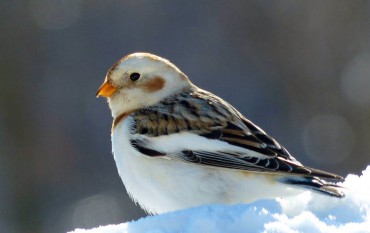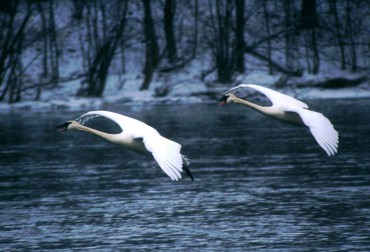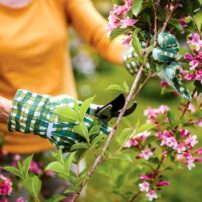
Many birds that nested in the North use the Pacific Northwest as their “south.” Their arrival at this time of the year is a winter highlight for the birding community. Audubon chapters plan their field trip schedules so members and visitors have a chance to see several of the popular locations. Some areas are considered “hot spots” and the rare or uncommon birds are on many minds throughout Western Washington as well as in the West Sound.
Point No Point, on the northern tip of the Kitsap Peninsula, and the waters off Hansville are monitored almost daily during the winter months. One of the most looked-for birds is the snowy owl. This resident of the Arctic tundra makes periodic migrations southward instead of remaining in its normal habitat. Fluctuations in its food supply are a major factor that influences this owl’s movements.
When a healthy food supply produces a growing population of these owls, a sudden drop in that food source can be fatal. Their numbers have reached a high point that is unsustainable when food in the form of tundra-dwelling rodents hits a low point.
Owls perish or move southward. They venture into unknown territory in search of food and their travels can take them from the Arctic as far south as northern California. The farther south they travel, the more difficult it becomes for them to find their way back north. Spotting one is exciting but the birds are stressed and should be viewed from a good distance away.

Swans, both the trumpeter and the tundra, are winter visitors that birders throughout the West Sound hope to see. While large numbers of both swan species can be seen north of Seattle in Skagit County, a smaller population can also be found in Kitsap County and on the Olympic Peninsula.
The small lakes scattered throughout the West Sound often yield one or more swans during the winter. When you are looking for bald eagles in the vicinity of Big Beef Creek near Seabeck, it’s a wonderful surprise to spot a swan or two. These magnificent birds are unpredictable when it comes to where they will appear but winter is when they can be expected.
Winter white is not only the color worn by snowy owls and swans, but one of the most prized and more rare birds is also white. Snow buntings that are resident in the far north can show up in small numbers some winters. They frequent the coastal beaches and the distant tips of gravelly spits like Dungeness, Ediz Hook and the northern tip of the Kitsap Peninsula.
While the above three species might be considered extra-special winter birds, this time of the year sees the bays, inlets and estuaries fill up with thousands of wintering water birds. Numbers can run into the tens of thousands when you take in all of Western Washington. Ducks, geese, mergansers, grebes, cormorants and loons as well as shorebirds and hawks make winter birding on the water the most rewarding season.
Loons aren’t rare but they are everyone’s favorite. The West Sound region regularly hosts three and sometimes five loon species. The large, common loon is the most typical of the three. It exchanges its black-and-white, tuxedo-like breeding plumage for one that is still black and white but very drab. This plumage switch takes place in the other loons as well and can make identification of winter loons more challenging. The Pacific loon and the red-throated have different physical features that make it possible to separate them from the common loon.
If the challenge of finding rare birds is tempting, it’s important to study up on identification characteristics like those that separate the yellow-billed loon from the common loon or the Arctic loon from the Pacific. Both of these two rare loons visit West Sound waters.
It can be difficult to get good looks at the different species of water birds because some of them feed and rest some distance offshore. Others, especially the ducks, often feed along the waterline or not far from the shore. Some of these are the most handsome ducks and the most entertaining.
Scoters, bufflehead, goldeneye and scaup wear mostly black and white but they are dressed in some striking patterns. The colder the winter, the more these birds that nest in the north like it. They will flirt with members of the opposite sex and even joust with other males in an attempt to impress the females. The water birds seen while enjoying a winter walk along the beach provide entertainment that can brighten the grayest November or December day.
During the winter months when the weather can be a challenge, local Audubon chapters schedule more field trips close to home. These outings are excellent for getting to know the birds that are using the Pacific Northwest in the same way that we visit the Southwest or Hawaii.
For information on Kitsap Audubon field trips, go to www.kitsapaudubon.org.
























Comments